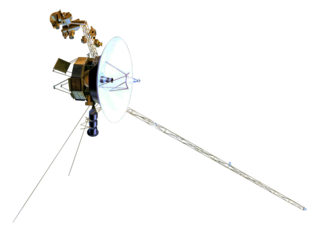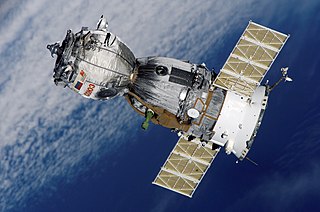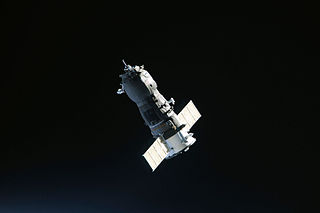Related Research Articles
In artificial intelligence (AI), an expert system is a computer system emulating the decision-making ability of a human expert. Expert systems are designed to solve complex problems by reasoning through bodies of knowledge, represented mainly as if–then rules rather than through conventional procedural programming code. Expert systems were among the first truly successful forms of AI software. They were created in the 1970s and then proliferated in the 1980s, being then widely regarded as the future of AI — before the advent of successful artificial neural networks. An expert system is divided into two subsystems: 1) a knowledge base, which represents facts and rules; and 2) an inference engine, which applies the rules to the known facts to deduce new facts, and can include explaining and debugging abilities.
Knowledge representation and reasoning is the field of artificial intelligence (AI) dedicated to representing information about the world in a form that a computer system can use to solve complex tasks such as diagnosing a medical condition or having a dialog in a natural language. Knowledge representation incorporates findings from psychology about how humans solve problems and represent knowledge, in order to design formalisms that will make complex systems easier to design and build. Knowledge representation and reasoning also incorporates findings from logic to automate various kinds of reasoning.

Voyager 1 is a space probe launched by NASA on September 5, 1977, as part of the Voyager program to study the outer Solar System and the interstellar space beyond the Sun's heliosphere. It was launched 16 days after its twin, Voyager 2. It communicates through the NASA Deep Space Network (DSN) to receive routine commands and to transmit data to Earth. Real-time distance and velocity data are provided by NASA and JPL. At a distance of 165.2 AU from Earth as of October 2024, it is the most distant human-made object from Earth. The probe made flybys of Jupiter, Saturn, and Saturn's largest moon, Titan. NASA had a choice of either doing a Pluto or Titan flyby; exploration of the moon took priority because it was known to have a substantial atmosphere. Voyager 1 studied the weather, magnetic fields, and rings of the two gas giants and was the first probe to provide detailed images of their moons.

Voyager 2 is a space probe launched by NASA on August 20, 1977, as a part of the Voyager program. It was launched on a trajectory towards the gas giants Jupiter and Saturn and enabled further encounters with the ice giants Uranus and Neptune. It remains the only spacecraft to have visited either of the ice giant planets, and was the third of five spacecraft to achieve Solar escape velocity, which will allow it to leave the Solar System. It has been sending scientific data to Earth for 47 years, 1 month, 21 days, making it the oldest active space probe. Launched 16 days before its twin Voyager 1, the primary mission of the spacecraft was to study the outer planets and its extended mission is to study interstellar space beyond the Sun's heliosphere.

A spacecraft is a vehicle that is designed to fly and operate in outer space. Spacecraft are used for a variety of purposes, including communications, Earth observation, meteorology, navigation, space colonization, planetary exploration, and transportation of humans and cargo. All spacecraft except single-stage-to-orbit vehicles cannot get into space on their own, and require a launch vehicle.

The Voyager program is an American scientific program that employs two interstellar probes, Voyager 1 and Voyager 2. They were launched in 1977 to take advantage of a favorable alignment of the two gas giants Jupiter and Saturn and the ice giants, Uranus and Neptune, to fly near them while collecting data for transmission back to Earth. After launch, the decision was made to send Voyager 2 near Uranus and Neptune to collect data for transmission back to Earth.

Uncrewed spacecraft or robotic spacecraft are spacecraft without people on board. Uncrewed spacecraft may have varying levels of autonomy from human input, such as remote control, or remote guidance. They may also be autonomous, in which they have a pre-programmed list of operations that will be executed unless otherwise instructed. A robotic spacecraft for scientific measurements is often called a space probe or space observatory.
In artificial intelligence, symbolic artificial intelligence is the term for the collection of all methods in artificial intelligence research that are based on high-level symbolic (human-readable) representations of problems, logic and search. Symbolic AI used tools such as logic programming, production rules, semantic nets and frames, and it developed applications such as knowledge-based systems, symbolic mathematics, automated theorem provers, ontologies, the semantic web, and automated planning and scheduling systems. The Symbolic AI paradigm led to seminal ideas in search, symbolic programming languages, agents, multi-agent systems, the semantic web, and the strengths and limitations of formal knowledge and reasoning systems.
In the field of artificial intelligence, an inference engine is a software component of an intelligent system that applies logical rules to the knowledge base to deduce new information. The first inference engines were components of expert systems. The typical expert system consisted of a knowledge base and an inference engine. The knowledge base stored facts about the world. The inference engine applied logical rules to the knowledge base and deduced new knowledge. This process would iterate as each new fact in the knowledge base could trigger additional rules in the inference engine. Inference engines work primarily in one of two modes either special rule or facts: forward chaining and backward chaining. Forward chaining starts with the known facts and asserts new facts. Backward chaining starts with goals, and works backward to determine what facts must be asserted so that the goals can be achieved.
MYCIN was an early backward chaining expert system that used artificial intelligence to identify bacteria causing severe infections, such as bacteremia and meningitis, and to recommend antibiotics, with the dosage adjusted for patient's body weight — the name derived from the antibiotics themselves, as many antibiotics have the suffix "-mycin". The Mycin system was also used for the diagnosis of blood clotting diseases. MYCIN was developed over five or six years in the early 1970s at Stanford University. It was written in Lisp as the doctoral dissertation of Edward Shortliffe under the direction of Bruce G. Buchanan, Stanley N. Cohen and others.
A knowledge-based system (KBS) is a computer program that reasons and uses a knowledge base to solve complex problems. Knowledge-based systems were the focus of early artificial intelligence researchers in the 1980s. The term can refer to a broad range of systems. However, all knowledge-based systems have two defining components: an attempt to represent knowledge explicitly, called a knowledge base, and a reasoning system that allows them to derive new knowledge, known as an inference engine.
In artificial intelligence, model-based reasoning refers to an inference method used in expert systems based on a model of the physical world. With this approach, the main focus of application development is developing the model. Then at run time, an "engine" combines this model knowledge with observed data to derive conclusions such as a diagnosis or a prediction.
In computer science, in particular in knowledge representation and reasoning and metalogic, the area of automated reasoning is dedicated to understanding different aspects of reasoning. The study of automated reasoning helps produce computer programs that allow computers to reason completely, or nearly completely, automatically. Although automated reasoning is considered a sub-field of artificial intelligence, it also has connections with theoretical computer science and philosophy.
In artificial intelligence, a procedural reasoning system (PRS) is a framework for constructing real-time reasoning systems that can perform complex tasks in dynamic environments. It is based on the notion of a rational agent or intelligent agent using the belief–desire–intention software model.
SNARK, , is a theorem prover for multi-sorted first-order logic intended for applications in artificial intelligence and software engineering, developed at SRI International.
In information technology a reasoning system is a software system that generates conclusions from available knowledge using logical techniques such as deduction and induction. Reasoning systems play an important role in the implementation of artificial intelligence and knowledge-based systems.

Cosmic Ray Subsystem is an instrument aboard the Voyager 1 and Voyager 2 spacecraft of the NASA Voyager program, and it is an experiment to detect cosmic rays. The CRS includes a High-Energy Telescope System (HETS), Low-Energy Telescope System (LETS), and The Electron Telescope (TET). It is designed to detect energetic particles and some of the requirements were for the instrument to be reliable and to have enough charge resolution. It can also detect the energetic particles like protons from the Galaxy or Earth's Sun.

Plasma Wave Subsystem, abbreviated PWS, is an instrument that is on board the Voyager 1 and Voyager 2 unmanned probes of the Voyager program. The device is 16 channel step frequency receiver and a low-frequency waveform receiver that can measure electron density. The PWS uses the two long antenna in a V-shape on the spacecraft, which are also used by another instrument on the spacecraft. The instrument recorded data about the Solar System's gas giants, and about the outer reaches of the Heliosphere, and beyond. In the 2010s, the PWS was used to play the "sounds of interstellar space" as the spacecraft can sample the local interstellar medium after they departed the Sun's heliosphere. The heliosphere is a region essentially under the influence of the Sun's solar wind, rather than the local interstellar environment, and is another way of understanding the Solar System in comparison to the objects gravitationally bound around Earth's Sun.

Galileo was an American robotic space probe that studied the planet Jupiter and its moons, as well as the asteroids Gaspra and Ida. Named after the Italian astronomer Galileo Galilei, it consisted of an orbiter and an entry probe. It was delivered into Earth orbit on October 18, 1989, by Space ShuttleAtlantis, during STS-34. Galileo arrived at Jupiter on December 7, 1995, after gravitational assist flybys of Venus and Earth, and became the first spacecraft to orbit an outer planet.
Inference Corporation was an American software company that specialized in artificial intelligence systems.
References
- ↑ Atkinson, D.J., "Artificial intelligence for monitoring and diagnosis of robotic spacecraft." Doctoral Dissertation. School of Electrical and Computer Engineering, Chalmers University of Technology, Göteborg, Sweden, ISSN 0282-5406; no 237. ISBN 91-7032-755-6. 1992.
- ↑ James, Mark and Atkinson, David, "STAR*TOOL - An Environment and Language for Expert System Implementation", JPL Report NTR C-1736, Jet Propulsion Lab., California Inst. of Tech.; Pasadena, CA, United States. August 19, 1988.
- ↑ Atkinson, D.J., Doyle, R.J, James, M.L., Kaufman, T., Martin, R.G., "Spacecraft Health Automated Reasoning Prototype (SHARP): The fiscal year 1989 SHARP portability evaluations task for NASA Solar System Exploration Division's Voyager project." NASA Technical Report, Number NASA-CR-187338, JPL-PUBL-90-20, Jet Propulsion Lab., California Inst. of Tech.; Pasadena, CA, United States. August 18, 1990.
- ↑ Atkinson, D.J., James, M.L., Lawson, D. Martin, R.G. and Porta, H. "Automated spacecraft monitoring". IEEE International Conference on Systems, Man and Cybernetics. IEEE: Los Angeles, CA. 4-7 Nov 1990. DOI: 10.1109/ICSMC.1990.142222 pp. 756 – 761
- ↑ Press Release, VIASPACE. Retrieved 15 August 2014. VIASPACE Announces Licensing of World's Fastest Inferencing Engine - SHINE - From Caltech
- ↑ Martin, R.G., Atkinson, D.J., James, M.L, Lawson, D.L. and Porta, H.J., "A report on SHARP (Spacecraft Health Automated Reasoning Prototype) and the Voyager Neptune encounter." NASA Technical Report, Number NASA-CR-187810, NAS 1.26:187810, JPL-PUBL-90-21, Jet Propulsion Lab., California Inst. of Tech.; Pasadena, CA, United States. August 15, 1990.